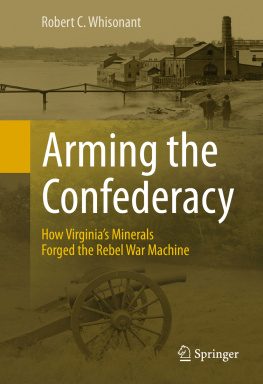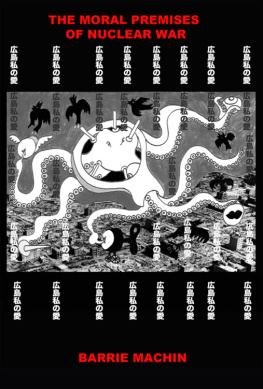1. Introduction
Nowhere is the impact of mineral resources on the military history of western civilization better shown than by the story of the Battle of Salamis in 480 BCE, the culmination of the struggle between the Greeks and Persians for eastern Mediterranean hegemony. After blunting an earlier Persian threat at Marathon, the citizens of Athens were advised by the Oracle at Delphi that a wooden wall would save the city. The Athenians came to believe that this meant building a much larger fleet of ships and decided to use the revenue from the silver mines at nearby Laurion to accomplish the task. Silver from Laurion had long given Athens the financial means to support its rise to prominence in the Aegean world. Now, the citizens voted to forego their usual dividends from the mines, instead using the money to add 200 ships to their naval armada.
At Salamis, the enhanced Greek flotilla delivered a crushing defeat to the Persian foe. Xerxes, king and leader of the Asian invaders, watched in horror from a throne on a hilltop overlooking the sea as the more nimble Greek galleys smashed his ponderous vessels to pieces. The Persians withdrew, having lost perhaps their best chance to permanently choke off rising Hellenic military power. Chroniclers have long rated Salamis as one of the most decisive engagements in world historythe battle that saved the democratic and scientific foundations of the West.
Successful nations are built on wealth. Throughout human history, mineral resources]. For ancient Egypt, gold was the foundation of dominion. Gold and silver supported the economies and armies of classical Greece and Rome, and centuries later the flow of those precious metals from the Americas enabled Spain to gain supremacy. More recently, iron and coal, the basic drivers of the Industrial Revolution, brought stunning economic and political benefits first to England, then to the United States. Each of these countries achieved international financial and military dominance built at least partly on an abundance of such material resources. Oil now reigns as the new natural assets master, and global wealth and economic influence fall to those nations who can access and utilize the most black gold.
In addition to furnishing much of a countrys financial base, mineral products are required to manufacture the physical means for engaging in armed conflict with its enemies. Warring societies early on put copper to use as a weapon, then bronze, and ultimately iron, which has remained an armaments mainstay for millennia. Over the centuries, a host of other natural materials have been indispensable for fightingsalt for the nutrition of the soldiers and army animals; niter (or saltpeter) for gunpowder; lead for bullets; and coal, oil, and now uranium to fuel the war industries and machines of the worlds armies, navies, and air forces.
The wars of the twentieth century between modern machine-dependent martial forces exemplify just how essential adequate supplies of a key mineral resourcepetroleumhave become in conflicts. British foreign secretary George Curzon remarked after World War I that the Allies floated to victory on a wave of oil []. World War II was in many ways even more of an oil war. It began for the United States when this nation cut off Japans supply and the Imperial Navy retaliated at Pearl Harbor. When American submarines at last shut off the shipping bringing petroleum to the home islands, Japans hopes of triumph sank with the torpedoed tankers. Germany grew increasingly desperate for oil during the war, and much of the fighting in Russia stemmed from the Nazi thrust to capture the oil-rich Caucasus area. As German petroleum supplies dwindled, its chemists and engineers finally turned to obtaining oil from coal. Although innovative (parts of this technology remain in use today), this effort could not come close to adequately feeding the Reichs war machines. Lord Curzons comment from 1918 rang still truer in 1945.
The American Civil War matched two industrialized opponents, but one side had a preponderant share of raw materials, manufacturing ability, and population that enabled it to emerge victorious. On the eve of battle in 1860, 90 per cent of the manufacturing capacity resided with the Union. Its factories made 97 per cent of the firearms, 94 per cent of the cloth, 93 per cent of the pig iron, and over 90 per cent of the boots and shoes. The disparity in the capability to make items necessary to the conduct of hostilities was based primarily on the Norths possession of more mineral riches, most notably iron and coal. Moreover, the Northern states had twice the railroad track mileage as the South, and over those rails traveled coal-burning trains.
The rise of mechanized manufacturing and transportation north of the Potomac River had meanwhile attracted throngs of immigrants, many of them skilled in the trades and crafts useful to businesses. These recently arrived citizens made up a considerable part of a Federal population that was twice that of the Confederacy. Yet despite these advantages, as historian James McPherson has pointed out, numbers and resources do not prevail in war without the will and skill to use them []. The North endured discouraging defeats early in the conflict, but in due time United States president Abraham Lincoln and his generalsUlysses Grant, William Sherman, and Philip Sheridan in particularcame to wage total war, attacking the enemys infrastructure, industry, agriculture, mines, and foundries as well as his armies in the field.
The South in fact was endowed with considerable assets of its own, including a people determined to contest every bit of a very large land mass, some heavy industry and weapons manufacturing (located mostly in Virginia), over 9,000 miles of railroad track, a globally important agricultural commodity in cotton and slaves to work the fields, and innovative military leadership, at least in the Eastern Theater. Furthermore, the Confederacy possessed extensive mineral deposits, although mining and refining of these were typically underdeveloped compared to the North and the transportation system often too deficient to deliver them.
In terms of mining activity, no Confederate state surpassed Virginia where large amounts of lead, salt, iron, niter, and coal were located. The southwestern quarter of the state produced most of the Confederacys lead and salt, along with significant quantities of the other minerals. Still, these natural resources held no value unless they could be moved to where they were needed. That task fell primarily to the Virginia and Tennessee Railroad. Over these steel rails moved the mineral products as well agricultural output vital to keeping Confederate armies in the field. Union Colonel Rutherford B. Hayes, involved in many of the military actions in Southwest Virginia, did not exaggerate when he called the rail line the jugular vein of the Confederacy [].
Almost from the beginning, Federal military strategists concerned with southwestern Virginia locked onto three prime targets: the salt works at Saltville, the Virginia and Tennessee Railroad running from Lynchburg to Bristol, and the Wythe County lead mines along the New River at Austinville (Figs. ). In the first years of the contest, Saltville, deservedly named for its chief product, drew the most Union attention. Later on, however, the lead works became the chief objective; had the North fully understood the critical nature of the Souths lead supply, the order of priority might have been reversed much earlier.











